Clouds on the edge of Space.... a Noctilucent Special!
BACK
TO WEATHER-BLOG MENU
New!
Fine Art Prints & digital images for sale- 
Welsh Weather
& Dyfi Valley landscapes Slide-Library - Click HERE
Noctilucent
clouds (sometimes referred to by the acronym - NLC) are very high cloud
formations consisting (so far as we know) of small ice particles. They
occur in the mesosphere - at altitudes of around 75 to 85 kilometers
(47 to 53 miles) and are thus quite set apart from all other types of
clouds (e.g. a mighty thunderhead is still only 10-20km high).
These strange, remote clouds are a relatively "new" thing. They were
first observed as recently as 1885 - not long after the explosive,
catastrophic eruption of Krakatoa. In recent years, they seem to be
getting observed more frequently - or maybe more people have started
looking for them! This has certainly been the case this year -
unfortunately the second cool, cloudy and damp summer in a row has
thwarted many an observing session.
So what do you look for, and where? Well, firstly the key time to
observe them is during the mid-May to mid-August period. At this time
of year, it never gets truly dark in the northern sky but instead there
is a deep twilight between sunset and sunrise. At this time, these
normally invisible clouds become illuminated by the sun which remains
over the horizon. Thus, the northern sky is the place to look, so you
need somewhere with a good view of the northern horizon.
The UK is at a good latitude for observing noctilucent clouds. Too far
south and the twilight isn't visible; too far north and you have the
Midnight Sun to contend with. Here, just nicely in the middle, is
ideal. And the results can be spectacular at times, with the best
displays rendering the sky a shimmering electric blue and the light
generated casting slight shadows!
Nobody has written anything on how to forecast a noctilucent display
putting in an appearance. They can be present three nights in a row and
then the fourth night draws a blank. In short you never know when
they'll appear. You therefore need a certain amount of patience to
successfully observe them - plus the willingness to give up on part of
your night's sleep. This I did on the night of July 3-4.
At
about 10pm I headed down to Borth on the coast. I had reasoned that
rather than sit twiddling my thumbs I might as well be doing something
that I could abandon quickly if a display started up so I grabbed the
fishing rods and headed for the beach.
Several
fish later and things were not looking good. A persistent long bank of
cloud lay along the northern horizon, obscuring the view of anything
more interesting going on aloft. Its top wasn't too high though - I
estimated maybe 650m - so the thought occurred to me that a gain in
height might give me a better chance. Packing in at about 2.30am, I
drove back to Machynlleth, noting the occasional bluish-white glimmer
in breaks in the cloudbank. This seemed encouraging and I headed off up
the mountain road between Machynlleth and Llanidloes, which goes up to
a respectable 520m above sea-level, and I finally had my reward for a
lost night's sleep:
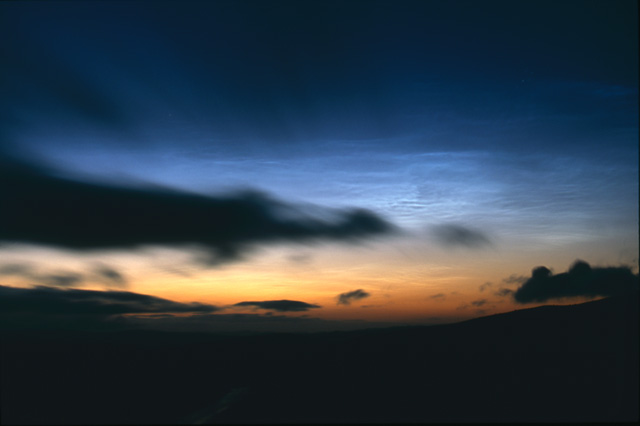 A delicate tracery of white and electric-blue filaments hung in the north-eastern sky with the colours of the coming dawn below. Just a few tatters of cloud obscured things at times. |
|
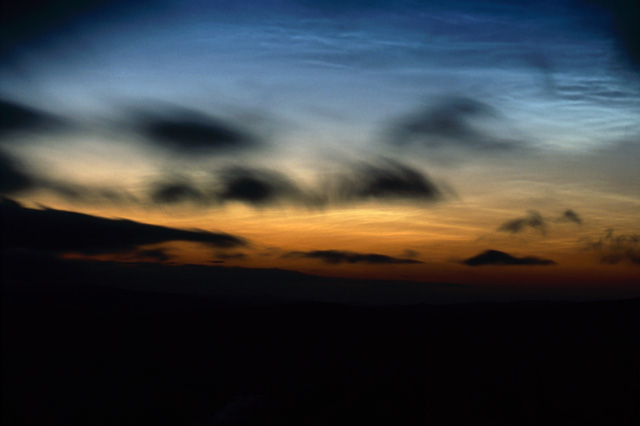 |
|
Tripod and telephoto lens came out. The beanbag I use for a tripod was placed on a handy straining-post, the camera was set to shoot by aperture-priority at f11 and it was game on! 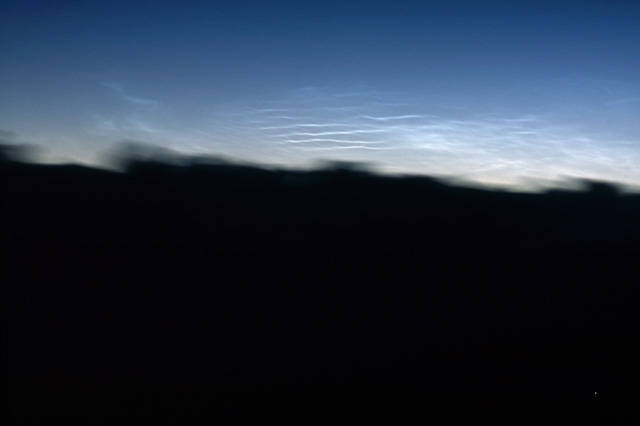 To the north, the cloudbank that had hindered me at Borth could not quite hide these beautiful delicate forms.... what a sight this would have been had it been clear, with the Arans and Cadair Idris in silhouette. That is a view on my "must see" list!! |
|
 Telephoto. They take on all sorts of forms. |
|
 Another of the view NE. |
|
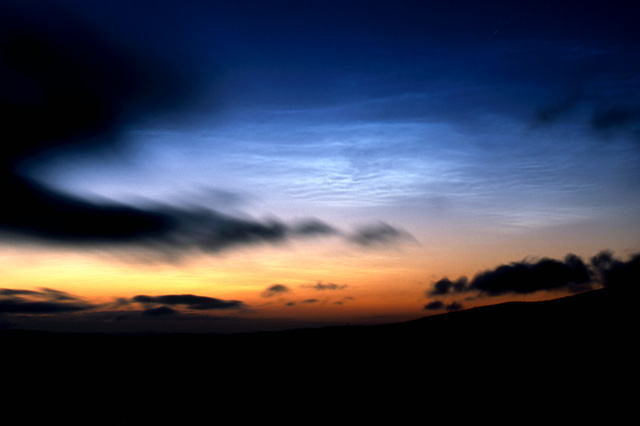 Dawn was now well on its way and the light levels steadily built up after I took this shot. Typically the last few took 30 seconds or so per shot. Hence it's better if there are either no clouds or the clouds are stationary (a rare thing!).....  The wet road surface now reflecting the lightening sky - yet the clouds were still going strong! 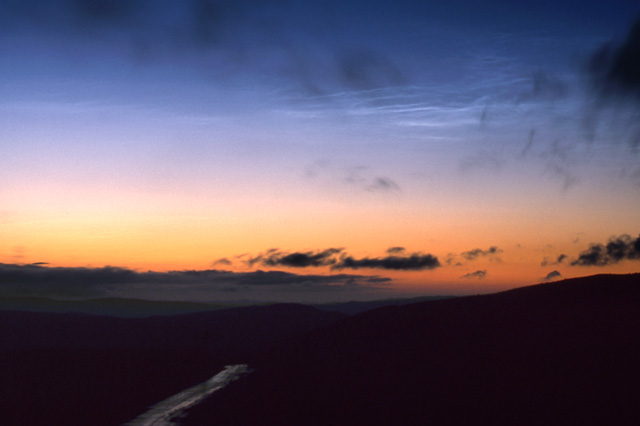 And the final shot. As it grew lighter they became faint and slowly faded away from view. The cloudbank then put in a show of its own by generating some Kelvin-Helmholtz wave-clouds - these are quite unusual too! 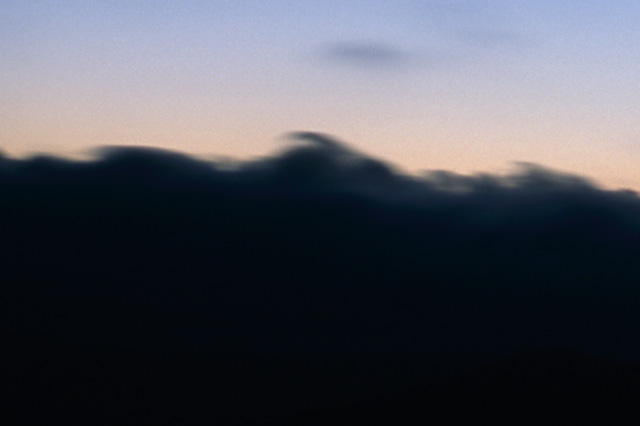 Below, the valley slept, apart from a few farms where there were lights on. I turned and headed back down there, with the thought of some strong coffee a pleasant notion!  I had seen these clouds in previous years, but this was the best display so far and the first I had tried to photograph. Next clear night (if indeed there is one before mid-August!) I shall be out there somewhere hoping for a repeat performance! Try it yourself - they are a rare and beautiful sight - whatever they are..... |
|
BACK TO WEATHER-BLOG MENU New! Fine Art Prints & digital images for sale- Welsh Weather & Dyfi Valley landscapes Slide-Library - Click HERE |